<Back to Index>
This page is sponsored by:
PAGE SPONSOR
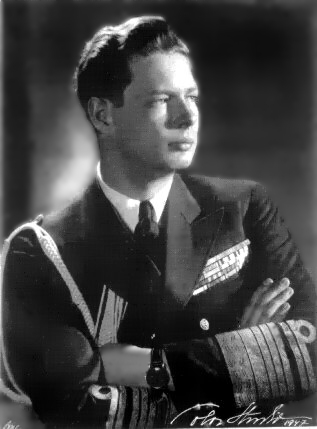
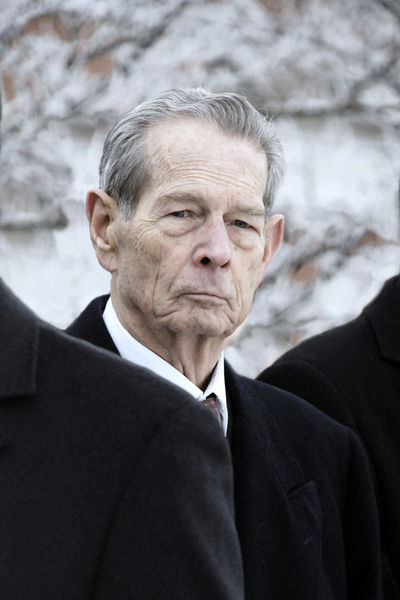
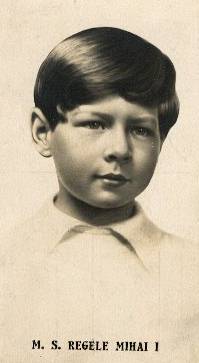
Michael (Romanian: Maiestatea Sa Mihai I Regele Românilor, literally "His Majesty Michael I King of the Romanians"; 25 October 1921 - 5 December 2017) was the last King of Romania. He reigned from 20 July 1927 to 8 June 1930, and again from 6 September 1940 until 30 December 1947 when he was forced, by the Communist Party of Romania (backed up by orders of Joseph Stalin), to abdicate to the Soviet armies of occupation. In addition to being the holder of the dis - established throne of Romania, he was also a Prince of Hohenzollern until 10 May 2011, when he renounced this title.
A great - great - grandson of Queen Victoria by both of his parents, and a third cousin of Queen Elizabeth II, he was one of the last surviving heads of state from World War II, the others being the former King Simeon II of Bulgaria and the former King Norodom Sihanouk of Cambodia.
Michael was born in the Foişor Castle or Peleş Castle, Sinaia, Romania, the son of Carol II of Romania (then Crown Prince of Romania) and Princess Elena of Greece. He was born as the grandson of the then reigning King Ferdinand of Romania. When Carol II eloped with his mistress Elena "Magda" Lupescu and renounced 'temporarily' his rights to the throne in December 1925, Michael was declared the heir apparent. He succeeded to the throne upon Ferdinand's death in July 1927.
A regency, which included his uncle, Prince Nicolae, Patriarch Miron Cristea, and the country's Chief Justice (Gheorghe Buzdugan, from October 1929 on Constantin Sărăţeanu) functioned on behalf of the 5 year old Michael during the 1927 – 1930 period. In 1930, Carol II returned to the country at the invitation of politicians dissatisfied with the Regency, and was proclaimed king by the Parliament, designating Michael as Crown Prince with the title "Grand Voievod of Alba - Iulia". In November 1939, Michael joined the Romanian Senate, as the 1938 Constitution guaranteed him a seat there upon reaching the age of eighteen. In September 1940, the pro - German anti - Bolshevik régime of Prime Minister Marshal Ion Antonescu staged a coup d'état against
Carol II, whom the Marshal claimed to be 'anti - German'. Antonescu
suspended the Constitution, dissolved the Parliament, and re-installed
the 18 year old Michael as King by popular acclaim (Although the
Constitution was restored in 1944 and the Romanian Parliament in 1946,
Michael did not either subsequently take a formal oath or have his reign
approved retroactively by Parliament). Michael was crowned with the Steel Crown and anointed King of Romania by the Orthodox Patriarch of Romania, Nicodim Munteanu, in the Patriarchal Cathedral of Bucharest, on the day of his accession, 6 September 1940. Although King Michael was formally the Supreme Head of the Army and entitled to appoint the Prime Minister with full powers named 'Leader of the people' ("Conducător"), in reality he was forced to remain only a figurehead until August 1944. Michael had lunch with Adolf Hitler twice, once with his father in Bavaria in 1937, and with his mother in Berlin in 1941. He also met Benito Mussolini in 1941, in Italy.
In 1944, World War II was going badly for the Axis powers, but the military dictator Prime Minister Marshal Ion Antonescu was still in control of Romania. As of August 1944, the Soviet conquest of Romania had become inevitable, being expected in a few months. On 23 August 1944, Michael joined the pro - Allied politicians, a number of army officers, and armed communist led civilians in staging a coup against Antonescu, whereas it was recognized in the late 1970s that King Michael ordered his arrest by the Royal Palace Guard. On the same night, the new Prime Minister, Lt. General Constantin Sănătescu — who was appointed by King Michael — gave custody of Antonescu to the communists (in spite of alleged instructions to the contrary by the King), who delivered him to the Soviets on 1 September. In a radio broadcast to the Romanian nation and army, Michael issued a cease - fire just as the Red Army was penetrating the Moldavian front, proclaimed Romania's loyalty to the Allies, announced the acceptance of the armistice offered by the United Kingdom, the United States, and the USSR, and declared war on Germany. However, this did not avert a rapid Soviet occupation and capture of about 130,000 Romanian soldiers, who were transported to the Soviet Union where many perished in prison camps. Although the country's alliance with the Nazis was ended, the coup sped the Red Army's advance into Romania. The armistice was signed three weeks later on 12 September 1944, on terms the Soviets virtually dictated. Under the terms of the armistice, Romania recognized its defeat by the USSR and was placed under occupation of the Allied forces with the Soviets, as their representative, in control of media, communication, post, and civil administration behind the front. The coup effectively amounted to a "capitulation", an "unconditional" "surrender". It has been suggested that the coup may have shortened World War II by six months, thus saving hundreds of thousands of lives.
King Michael was the last monarch behind the Iron Curtain to lose his throne. At the end of the war, King Michael was awarded the highest degree (Chief Commander) of the Legion of Merit by U.S. President Harry S. Truman. He was also decorated with the Soviet Order of Victory by Joseph Stalin "for the courageous act of the radical change in Romania's politics towards a break-up from Hitler's Germany and an alliance with the United Nations, at the moment when there was no clear sign yet of Germany's defeat,"
according to the official description of the decoration. He was the only surviving recipient as of 2011.
In March 1945, political pressures forced King Michael to appoint a pro - Soviet government dominated by the Romanian Communist Party. Under the communist régime King Michael functioned again as little more than a figurehead. Between August 1945 and January 1946, during what was later known as the "royal strike," King Michael tried unsuccessfully to oppose the first communist government led by the communist Prime Minister Petru Groza, by refusing to sign its decrees. In response to Soviet, British, and American pressures, King Michael eventually gave up his opposition to the communist government and stopped demanding its resignation.
He did not pardon former
Marshal Antonescu, who was sentenced to death "for betrayal of the
Romanian people for the benefit of Nazi Germany, for the economic and
political subjugation of Romania to Germany, for cooperation with the Iron Guard, for murdering his political opponents, for the mass murder of civilians and crimes against peace". Nor did King Michael manage to save such leaders of the opposition as Iuliu Maniu and the Bratianus, victims
of communist political trials, as the Constitution prevented him from
doing so without the counter - signature of communist Justice Minister Lucreţiu Pătrăşcanu (who was, himself, later eliminated by Gheorghiu - Dej's opposing communist faction). The memoirs of King Michael's aunt Princess Ileana quote Emil Bodnăraş — her alleged lover, Romania's communist minister of defense, and a Soviet spy — as
saying: "Well, if the King decides not to sign the death warrant, I
promise that we will uphold his point of view." Princess Ileana was
skeptical: "You know quite well (...) that the King will never of his
free will sign such an unconstitutional document. If he does, it will be
laid at your door, and before the whole nation your government will
bear the blame. Surely you do not wish this additional handicap at this
moment!"
In November, 1947 King Michael traveled to London for the wedding of his cousins, The Princess Elizabeth (the future Queen Elizabeth II) and Philip Mountbatten, an occasion during which he met Princess Anne of Bourbon - Parma (his second cousin once removed), who was to become his wife. According to unconfirmed claims by so-called Romanian 'royalists', King Michael did not want to return home, but certain Americans and Britons present at the wedding encouraged him to do so; Winston Churchill is said to have counseled Michael to return because "above all things, a King must be courageous." According to his own account, King Michael rejected any offers of asylum and decided to return to Romania, contrary to the confidential, strong advice of the British Ambassador to Romania.
On 30 December 1947 the royal palace was surrounded by the Tudor Vladimirescu army units loyal to the Communists. Michael was forced at gun point (by either Petru Groza or Gheorghe Gheorghiu - Dej, depending on the source) to abdicate Romania's throne. Later the same day, the Communist dominated government announced the 'permanent' abolition of the monarchy and its replacement by a People's Republic, broadcasting the King's pre-recorded radio proclamation of his own abdication. On 3 January 1948, Michael was forced to leave the country, followed over a week later by Princesses Elisabeth and Ileana, who collaborated so closely with the Soviets they became known as the King's "Red Aunts."
According to Michael's own account, the Communist Prime Minister Petru Groza had threatened him at gun point and warned that the government would shoot 1,000 arrested students if the king did not abdicate. In an interview with The New York Times from 2007, Michael recalls the events: “It was blackmail. They said, ‘If you don’t sign this immediately we are obliged’ — why obliged I don’t know — 'to kill more than 1,000 students' that they had in prison.” According to Time magazine, the communist government threatened Michael that it would arrest thousands and steep the country in blood if he did not abdicate.
However, according to the autobiography of the former head of the Soviet intelligence agency NKVD, Major General Pavel Sudoplatov, the Deputy Soviet Foreign Commissar Andrey Vyshinsky personally conducted negotiations with King Michael for his abdication, guaranteeing part of a pension to be paid to Michael in Mexico. According to a few articles in Jurnalul Naţional, Michael's abdication was negotiated with the Communist government, which allowed him to leave the country with the goods he requested and by some of the royal retinue.
According to the Albanian communist leader Enver Hoxha, who recounts his conversations with the Romanian Communist leaders on the monarch's abdication, King Michael was threatened with a pistol by the Romanian Communist Party leader Gheorghe Gheorghiu - Dej rather than Petru Groza so as to abdicate. He was allowed to leave the country accompanied by some of his entourage and, as confirmed also by the Soviet leader Nikita Khrushchev recounting Dej's confessions, with whatever properties he desired, including gold and rubies. Hoxha does say in his book that the Romanian communist leaders had threatened King Michael with their loyal army troops, which had encircled the royal palace and its troops loyal to King Michael.
According to Time magazine, in early 1948 there had been negotiations between King Michael and the communist government over the properties he left behind in Romania and those negotiations delayed his denunciation of the abdication as illegal.
There are reports that Romanian communist authorities, obedient to Stalin, allowed King Michael to part with 42 valuable Crown owned paintings in November 1947, so that he would leave Romania faster. Some of these paintings were reportedly sold through the famed art dealer Daniel Wildenstein. One of the paintings belonging to the Romanian Crown which was supposedly taken out of the country by King Michael in November 1947, returned to Romania in 2004 as a donation made by John Kreuger, the former husband of King Michael's daughter Princess Irina.
In 2005 Romanian Prime Minister Călin Popescu-Tăriceanu denied these accusations about King Michael, stating that the Romanian government has no proof of any such action by King Michael and that, prior to 1949, the government had no official records of any artwork taken over from the former royal residences. However, according to some historians, such records existed as early as April 1948, having been, in fact, officially published in June 1948.
According to Ivor Porter's authorized biography, Michael of Romania: The King and The Country (2005), which quotes Queen Mother Helen's daily diary, the Romanian royals took out paintings belonging to the Romanian Royal Crown on their November 1947 trip to London to the wedding of the future Queen Elizabeth II; two of these paintings, signed by El Greco, were sold in 1976.
According to recently declassified Foreign Office documents, when he left Romania, the exiled king Michael's only assets amounted to 500,000 Swiss francs. Recently declassified Soviet transcripts of talks between Joseph Stalin and the Romanian Prime Minister Petru Groza show that shortly before his abdication, King Michael received from the communist government assets amounting to 500,000 Swiss francs. King Michael, however, repeatedly denied that
the communist government had allowed him to take into exile any
financial assets or valuable goods besides four personal automobiles
loaded on two train cars.
In January 1948, Michael began using one of his family's ancestral titles, "Prince of Hohenzollern," instead of using the title of "King of Romania." After denouncing his abdication as forced and illegal in March 1948, Michael resumed use of the kingly title.
On 10 June 1948 in Athens, Greece, he married Princess Anne of Bourbon - Parma (b. Paris, 18 September 1923), his second cousin once removed. They lived first in Britain and later settled in Switzerland. The Communist Romanian authorities illegally stripped him of his Romanian citizenship in 1948. He became a commercial pilot and worked for an aircraft equipment company. He and his wife have five daughters.
In 1992, three years after the revolution which overthrew the Communist dictatorship, the Romanian government allowed Michael to return to his country for Easter celebrations, where he drew large crowds. In Bucharest over a million people turned out to see him. Michael's popularity alarmed the government of President Ion Iliescu, so Michael was forbidden to visit Romania again for five years. In 1997, after Iliescu's defeat by Emil Constantinescu, the Romanian Government restored Michael's citizenship and again allowed him to visit the country. He now lives partly in Switzerland at Aubonne and partly in Romania, either at Săvârşin Castle in Arad county or in an official residence in Bucharest — the Elisabeta Palace — voted by the Romanian Parliament by a law concerning arrangements for former heads of state.
According to the succession provisions of the Romanian kingdom's last democratically approved monarchical constitution of 1923, upon the death of King Michael without sons, the claim to the Crown devolves once again upon the Hohenzollern - Sigmaringen family.
However, on 30 December 2007, on the 60th anniversary of his abdication, King Michael signed the Fundamental Rules of the Royal Family of Romania, by which he designated Princess Margarita as heiress to the throne with the titles of "Crown Princess of Romania" and "Custodian of the Romanian Crown." This act is, during the republican form of government and in the absence of approval by the Parliament, considered to be null and void. On the same occasion, Michael also asked the Romanian Parliament that, should it consider restoring the monarchy, it should also abolish the salic law of succession.
Michael participated in the Victory parade in Moscow in 2010 as the only living Supreme Commander - in - Chief of a European State in the Second World War. The name of Michael I is listed on the memorial in the Grand Kremlin Palace as a recipient of the Order of Victory.
On
10 May 2011, on a background of lawsuits in Germany brought against his
family by his German relatives regarding the former name
Hohenzollern - Veringen of his son in law, Radu, and of fears expressed
by some that the German Hohenzollerns may claim succession to the
headship of the Romanian royal house, Michael severed all of the
dynastic and historical ties with the princely house of Hohenzollern - Sigmaringen,
changed the name of his family to "of Romania", and gave up all
princely titles conferred to him and to his family by the German
Hohenzollerns.
Michael cannot be said to have encouraged monarchist agitation in Romania and royalist parties have made little impact in post communist Romanian politics. He took the view that the restoration of the monarchy in Romania could only result from a decision by the Romanian people. "If the people want me to come back, of course, I will come back," he said in 1990. "Romanians have had enough suffering imposed on them to have the right to be consulted on their future." King Michael's belief was that there was still a role for, and value to, the monarchy today: "We are trying to make people understand what the Romanian monarchy was, and what it can still do" (...for them). According to a 2007 opinion poll conducted at the request of the Romanian Royal House, only 14% of Romanians were in favor of the restoration of the monarchy. Another 2008 poll found that only 16% of Romanians are monarchists.
Michael had undertaken some quasi - diplomatic roles on behalf of post - communist Romania. In 1997 and 2002 he toured Western Europe, lobbying for Romania's admission into NATO and the European Union, and was received by heads of state and government officials.
In December 2003, allegedly to the "stupefaction of the public opinion in Romania", Michael awarded the "Man of The Year 2003" prize to the then Prime Minister Adrian Năstase, leader of the PSD party, on behalf of the tabloid VIP. The daily Evenimentul Zilei subsequently complained that 'such an activity was unsuited to a king and that Michael was wasting away his prestige', with the majority of the political analysts 'considering his gesture as a fresh abdication'.
On
October 25, 2011, on the occasion of his 90th birthday, Michael
delivered a speech before the assembled chambers of the Romanian
Parliament.
Michael had a reputation for taciturnity.
He once said to his grandmother, "I have learned not to say what I
feel, and to smile at those I most hate." Before getting to know his
future wife, Anne of Bourbon - Parma, Michael had a romantic relationship with, among others, a Greek woman, Dodo Chrisolegos, a protégée of the former Romanian Communist Party leader Ana Pauker. Some claim that political influences had been exerted upon King Michael through this liaison.
On 10 May 2007, King Michael received the Prague Society for International Cooperation and Global Panel Foundation's 6th Annual Hanno R. Ellenbogen Citizenship Award, previously awarded to Vladimir Ashkenazy, Madeleine Albright, Václav Havel, Lord Robertson, and Miloš Forman. On 8 April 2008, King Michael and Patriarch Daniel were elected as Honorary Members of the Romanian Academy.
Michael participated in the Victory Parade in Moscow in 2010 as the only living Supreme Commander - in - Chief of a European State in the Second World War. The name of Michael I is listed on the memorial in the Grand Kremlin Palace as one of only 20 recipients of the Order of Victory.
In old age, Michael enjoyed a strong revival in popularity. On 25 October 2011, on the occasion of his 90th birthday, he delivered a speech before the assembled chambers of the Romanian Parliament. An opinion poll in January 2012 placed him as the most trusted public figure in Romania, far ahead of the political leaders. Later, in October 2012, celebrating Michael's 91st birthday, a square in Bucharest was renamed after him.
On 1 August 2016, he became a widower when Queen Anne died at the age of 92.
On 2 March 2016, the Royal Council announced King Michael's retirement from public life; with tasks assumed by Crown Princess Margareta, his daughter. After surgery, King Michael was diagnosed with chronic leukemia and metastatic epidermoid carcinoma and faced a complex and lengthy treatment.
In June 2017, the Royal House stated in a press release that "His Majesty's health is fragile but stable. King Michael is quiet, has soulful appreciation and appreciates the care of his medical team. Along with the King, they are permanently employed by His Majesty's House, detached in Switzerland, and two Orthodox nuns."
At the end of August 2017, the Royal House announced that "King
Michael is in a fragile but balanced state, and has a good mood,"
stating that Princess Elena had completed a visit to Switzerland for a
few days next to King Michael, at the private residence. According to
the Royal House, King Michael "continues to stay daily under close
supervision of physicians, medical staff of various specialties, and in
the presence of devoted members of the staff of His Majesty's House,
stationed in Switzerland." Also, two Orthodox nuns, detached from the
Romanian Orthodox Church, are still in the private residence.
On 5 December, Michael died at his residence in Switzerland at the age of 96. His body was brought back by a military plane to Romania from Switzerland on December 13, first taken to Peles Castle at Sinaia in the high Carpathians, then to Bucharest, displayed at the former Royal Palace (now the National Museum of Art) for two days. Michael was buried on 16 December with full state honors at Curtea de Argeș, beside his wife Queen Anne who died in 2016. Royalty at the state funeral included Charles, Prince of Wales, Carl XVI Gustaf of Sweden and Queen Silvia, Juan Carlos I of Spain and Queen Sofia, Henri, Grand Duke of Luxembourg, Princess Astrid and Prince Lorenz of Belgium.
According to the succession provisions of the Romanian kingdom's last democratically approved monarchical constitution of 1923, upon the death of King Michael without sons, the claim to the Crown devolves once again upon the Hohenzollern family. However, on 30 December 2007, on the 60th anniversary of his abdication, King Michael signed the Fundamental Rules of the Royal Family of Romania, by which he designated Princess Margareta as his heir. The document has no legal standing, as it regulates an institution that is not extant anymore.
On 10 May 2011, on a background of lawsuits in Germany brought against his family by his German relatives regarding the former name Hohenzollern - Veringen of his son - in - law, Radu, and of fears expressed by some that the German Hohenzollerns may claim succession to the headship of the Romanian royal house, Michael severed all of the dynastic and historical ties with the princely house of Hohenzollern, changed the name of his family to "of Romania", and gave up all princely titles conferred upon him and his family by the German Hohenzollerns.
On 1 August 2015, Michael signed a document removing the title Prince
of Romania and the qualification of Royal Highness from his grandson, Nicholas Medforth - Mills,
who was also removed from the line of succession. The former king took
the decision "with an eye on Romania's future after the reign and life
of his eldest daughter, Margareta". The former king hoped that "Nicholas
will find in future years a suitable way to serve the ideals and use
the qualities that God gave him". Nicholas's mother, Princess Helen,
received notification of the former king's decision in a personal
letter.
Aged 16, when he was crown prince, Michael was the driver of a car that hit a bicycle; the cyclist died from the accident. The incident was censored in contemporary press, but appears in the official Censorship Records, and is confirmed by the memoirs of the former prime minister Constantin Argetoianu.
Michael was head of the Romanian Boy Scouts in the 1930s. He was passionate about cars, especially military jeeps. He was also interested in aircraft having worked as a test pilot during exile.
Shortly after the Second World War, he became interested in Moral Rearmament, which was introduced to him by his first cousin Prince Richard of Hesse - Cassel, and as Swiss residents after 1956 he and Queen Anne paid numerous visits to the MRA conference centre of Caux, where he found solace for the loss of his country and his émigré status as well as new hope for future reconciliation.
- 25 October 1921 – 4 January 1926: His Royal Highness Prince Michael of Romania, Prince of Hohenzollern-Sigmaringen
- 4 January 1926 – 20 July 1927: His Royal Highness Crown Prince Michael of Romania, Prince of Hohenzollern-Sigmaringen
- 20 July 1927 – 8 June 1930: His Majesty the King of Romania
- 8 June 1930 – 6 September 1940: His Royal Highness Michael, Grand Voivode of Alba Julia, Crown Prince of Romania
- 6 September 1940 – 5 December 2017: His Majesty the King of Romania
In addition to being the claimant to the defunct throne of Romania, he was also a Prince of Hohenzollern - Sigmaringen until 10 May 2011, when he renounced this title. For most of his life, he would have been in line of succession to the British throne had he not married a Roman Catholic (though the ban on marriage to a Roman Catholic was lifted in the 2011 Perth Agreement along with the rule of male succession).
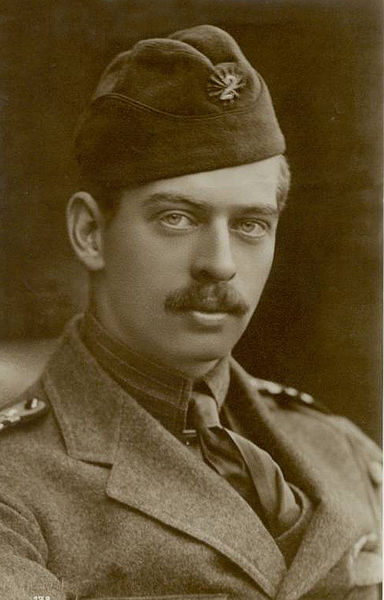
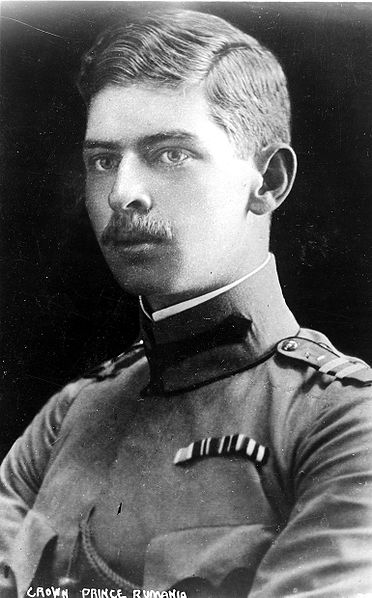
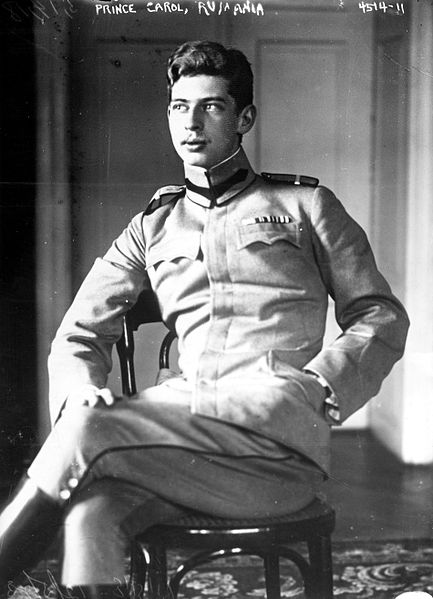
Carol II (15 October 1893 – 4 April 1953) reigned as King of Romania from 8 June 1930 until 6 September 1940. Eldest son of Ferdinand, King of Romania, and his wife, Queen Marie, a daughter of Prince Alfred, Duke of Edinburgh, the second eldest son of Queen Victoria. He was the first of the Romanian royal family who was baptized in the Orthodox rite.
Carol was born in Peleş Castle. In November 1914, Carol joined the Romanian Senate, as the 1866 Constitution guaranteed him a seat there upon reaching majority. Known more for his romantic misadventures than for any leadership skills, Carol (Romanian for "Charles") was first married in the Cathedral Church of Odessa, Ukraine, 31 August 1918, in contravention of royal law, to Joanna Marie Valentina Lambrino (1898 – 1953), known as "Zizi", the daughter of a Romanian general. They had one son, Mircea Gregor Carol Lambrino, and the marriage was annulled by decision of the Ilfov Tribunal in 1919.
He next married, in Athens, Greece, on 10 March 1921, Princess Helen of Greece and Denmark (who was known in Romania as Crown Princess Elena. They were second cousins as both were great - grandchildren of Queen Victoria. The marriage soon collapsed in the wake of Carol's affair with Elena "Magda" Lupescu (1895? – 1977), the Roman Catholic daughter of a Jewish pharmacist and his Roman Catholic wife. Magda Lupescu had formerly been the wife of Army officer Ion Tâmpeanu.
As
a result of the scandal, he renounced his right to the throne on 28
December 1925 in favor of his son by Crown Princess Helen, Michael (Mihai), who became King in July 1927. Helen divorced Carol in 1928.
Returning to the country unexpectedly on 7 June 1930, Carol reneged on the renunciation and was proclaimed King the following day, replacing his son (Michael) on the throne. For the next decade he sought to influence the course of Romanian political life, first through manipulation of the rival Peasant and Liberal parties and anti - Semitic factions, and subsequently (January 1938) through a ministry of his own choosing (the National Renaissance Front), with a constitution (27 February) reserving ultimate power to the Crown. In 1938, he banned the Iron Guard, which he had supported in the 1930s.
Carol also sought to build up his own personality cult to counter the growing influence of the Iron Guard, for instance by setting up a paramilitary youth organization known as Straja Ţării in 1935.
He was made the 892nd Knight of the Order of the Garter in 1938 by his second cousin, King George VI of the United Kingdom.
Forced under first Soviet and subsequently Hungarian, Bulgarian and German pressure to surrender parts of his kingdom to foreign rule, he was outmaneuvered at last by the pro - German administration of Marshal Ion Antonescu, and abdicated in favor of Michael. He was exiled to Mexico, and he leased Upton House from Poole Corporation later in the 1950s, but ultimately settled in Portugal.
Carol and Magda Lupescu were married in Rio de Janeiro, Brazil, on 3 June 1947, Magda taking the title of Princess Elena von Hohenzollern. Carol remained in exile for the rest of his life. He was never to see his son, King Michael, after his 1940 departure from Romania. Michael refused to meet his father ever again.
Carol died and was buried in Estoril, Portugal, in 1953; his remains were returned to Romania in 2003, at the Curtea de Argeş monastery. They lie outside the cathedral that is the burial place of most Romanian kings. Neither of his sons participated in either ceremony. His younger son, Michael, was represented by his daughter, Princess Margarita, and her husband, Radu Duda, Prince of Hohenzollern - Veringen. His eldest son, Carol Lambrino was forbidden (since 1940) to enter Romanian territory.